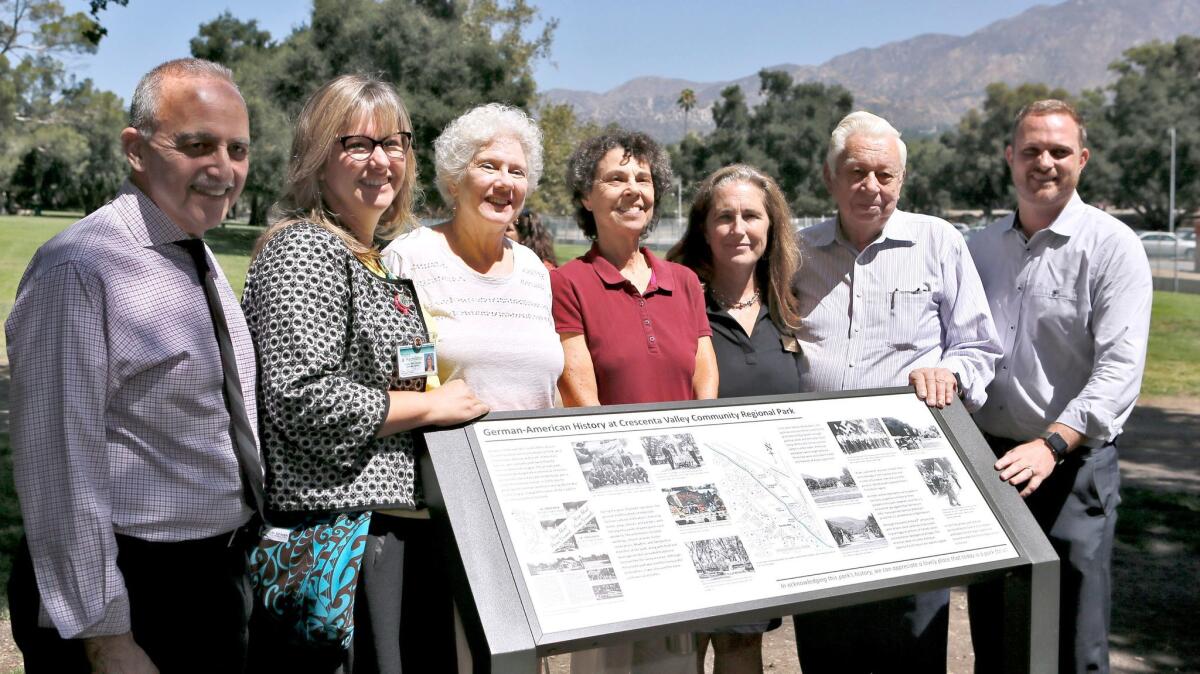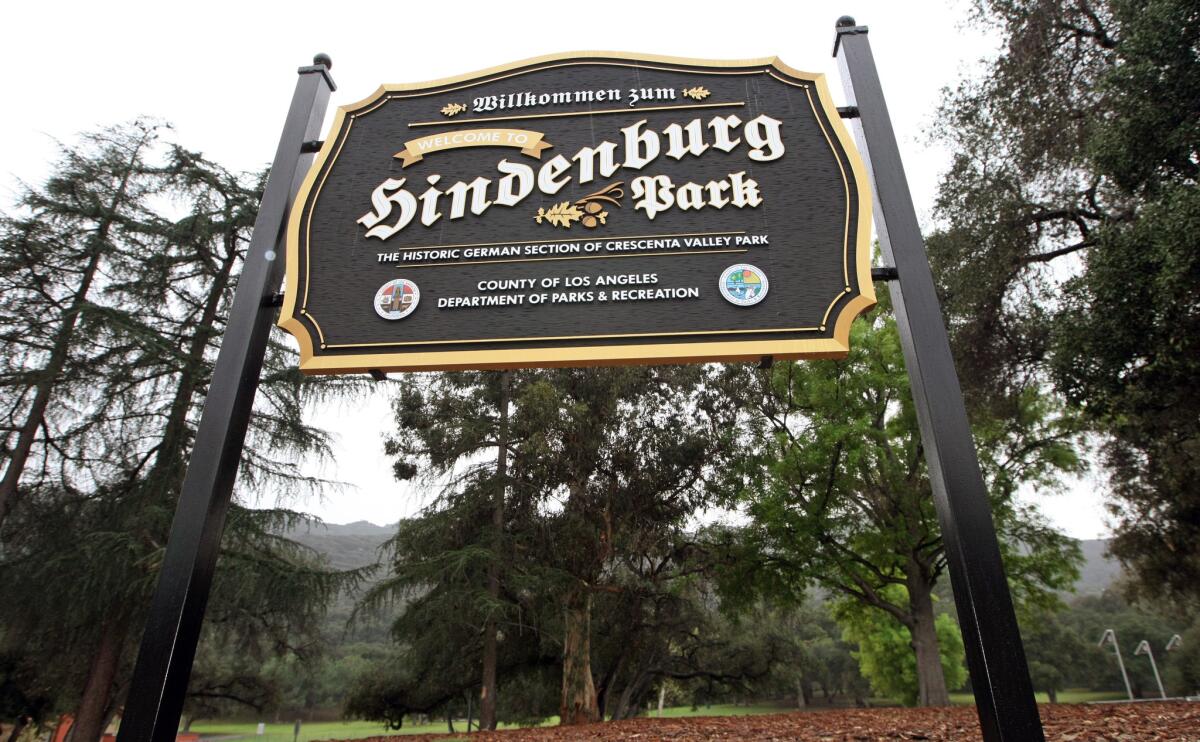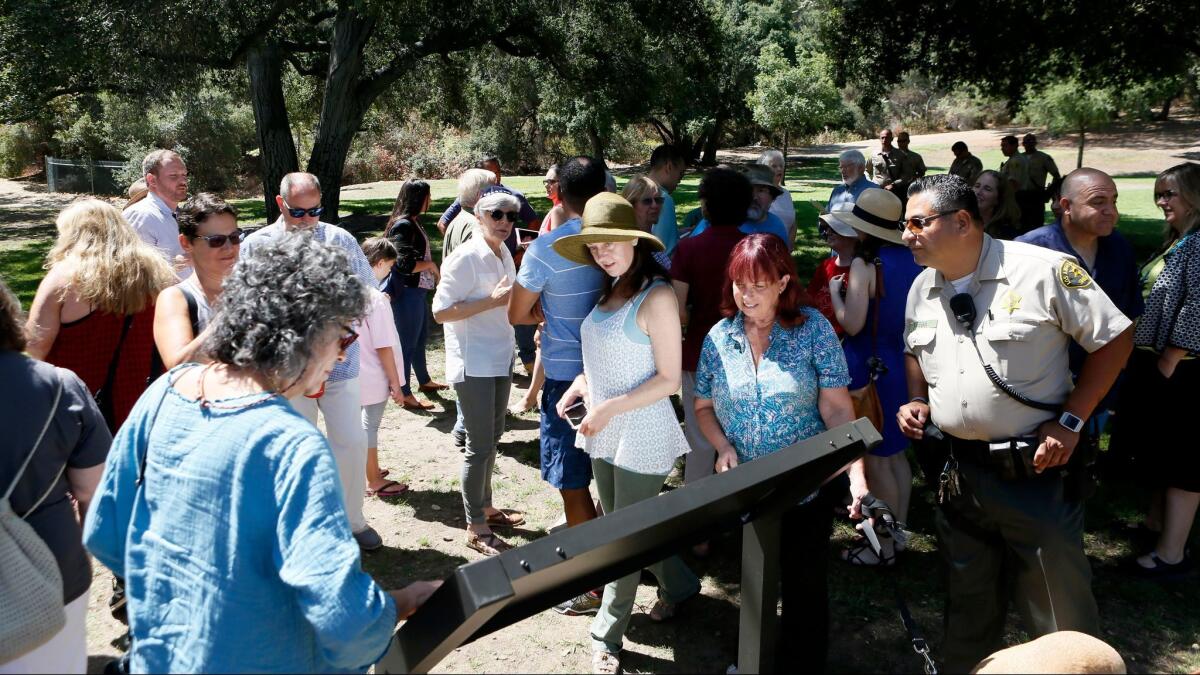An L.A. County community grapples with its Nazi past — through words, not violence
As the United States grapples with a seemingly growing movement of white supremacy and nationalism entering mainstream culture, a yearlong battle over a La Crescenta park’s Nazi past has come to a close.
Officials with the Los Angeles County Parks and Recreation Department unveiled a new historical marker at Crescenta Valley Community Regional Park Friday morning that showcased the area’s German American roots but also its ties to Nazi Germany.
“We’re so proud that this community worked with the county to best describe the history of this park and the German American culture in Crescenta Valley,” Mercy Santoro, a deputy director with the parks department, said at the unveiling.
Santoro said the work did not come without difficult conversations among community members.

A NAZI PAST
Sign sparks debate about history, present
A portion of the park, located at 3901 Dunsmore Ave., was formerly known as Hindenburg Park, named after former German President Paul von Hindenburg. In February 2016, a controversial sign using the Hindenburg name was erected, welcoming park-goers in German.
Privately funded by the Tricentennial Foundation, a local German-heritage organization, the sign caused an uproar among some members of the community.
The Jewish Federation of the Greater San Gabriel and Pomona Valleys said the sign was a callback to Nazi atrocities and the area’s Nazi past, creating an unwelcoming atmosphere — all because of the park’s namesake.

Paul von Hindenburg
Coming to terms with racism, anti-Semitism
Hindenburg was president of Germany from 1925 to 1934 and, during his tenure, he appointed Adolf Hitler as the country’s chancellor.
Historians view this move as a contributing factor to the fall of the Weimar Republic and Hitler’s ascendancy as leader of Nazi Germany.
And during the 1930s and 1940s in La Crescenta, several pro-Nazi rallies were held on the park’s grounds. The rallies were staged by the Bund, an American-based political group that modeled itself after the Nazi Party.
The installation of the Hindenburg sign led to weeks of meetings and debates about heritage versus history, culminating with the Los Angeles Community Commission on Human Relations voting to take down the sign in May 2016. Many applauded the commission’s decision.
“The truth, and the complete truth, is really important,” said Mona Field, professor emeritus at Glendale Community College. “Remembering the good as well as the bad, there is no neutral position when it comes to Nazism, anti-Semitism or racism.”

COMMUNITY COMES TOGETHER
Using talk, not violence, to find a solution
Jason Moss, executive director of the Jewish Federation, said the new marker will show the true and full history of the park, and it will stand the test of time.
“This is an example of how people can come together and work through differences through dialogue versus resorting to violence,” he said.
Hans Eberhard, chairman of the Tricentennial Foundation, congratulated the efforts behind the new historical marker, but added he wasn’t trying to cause any controversy. He said after a certain point he gave up the fight to keep the Hindenburg Park sign.
“I was trying to preserve history,” he said. “We weren’t honoring the man Hindenburg but the park.”
ALSO
Counter-protesters swarm rally against illegal immigration in Laguna Beach
'Racism and nationalism rooted in fear,' L.A. archbishop says after Charlottesville violence
L.A. may deny rally permits to hate groups, city attorney says
Sign up for Essential California
The most important California stories and recommendations in your inbox every morning.
You may occasionally receive promotional content from the Los Angeles Times.








